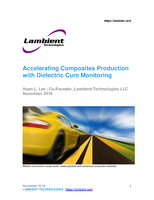Standards Support Global Market for wearable medical devices.
Press Release Summary:
Support from standards is crucial as wearables – equipment that can capture patient vitals, tracking everything from blood pressure to pulse – impact healthcare industry. Several standards support evaluation of such devices, including IEEE 1708 regarding wearable cuffless blood pressure measuring devices and ANSI/ASA S3.462013 for measurement of acoustic output and acoustic gain of hearing aids. Other standards, including ISO 109935 and ISO 1099310, cover materials used to create such devices.
Original Press Release:
Global Market for Wearable Medical Devices Gets Life Support from Standards
The global wearable medical device market is expected to soar in the next few years, supported by the debut of fast and portable equipment that can capture patient vitals, tracking everything from blood pressure to pulse. The potential is promising for the medical field, but experts contend that seamless interoperability and self-sufficiency is essential in order for mainstream adoption. Several standards support the materials and the evaluation of such devices—including those that have been around for years.
Forecasts for the wearable medical device segment look positive. A recent report by Transparency Market Research indicates that while the global wearable medical devices market was worth $2 billion in 2012, it is expected to more than double that value to $5.8 billion by 2019. Even with such substantial growth projections, industry research cautions that the potential for growth and success of such wearables is dependent on their “seamless interoperability and self-sufficiency.”
Wearable blood pressure cuffs could change cardiovascular treatment with the support of standards. Last year, the Institute of Electrical and Electronics Engineers (IEEE), an American National Standards Institute (ANSI) member and accredited standards developer, announced the approval of IEEE 1708 Standard for Wearable Cuffless Blood Pressure Measuring Devices. This standard provides guidelines for manufacturers to qualify and validate their products, potential purchasers or users to evaluate and select prospective products, and health care professionals to understand the manufacturing processes on wearable BP devices. This standard also reflects the change in the health industry, as existing standards for evaluating blood-pressure meters were created for traditional devices.
Other standards support the various materials utilized to create wearable medical devices. In just one example, certain polycarbonate blends developed specifically for wearable devices have been designed to meet the requirements of the ISO 109935 Biological evaluation of medical devices Part 5: Tests for in vitro cytotoxicity and ISO 1099310 Biological evaluation of medical devices Part 10: Tests for irritation and skin sensitization for biocompatibility, which were both developed by ISO Technical Committee (TC) 194. The ANSI-accredited U.S. Technical Advisory Group (TAG) to TC 194 is administered by the Association for the Advancement of Medical Instrumentation (AAMI).
Various other standards that support “wearable” medical devices have been available for decades. ANSI/ASA S3.462013 Methods of Measurement of RealEar Performance Characteristics of Hearing Aids, for example, is an American National Standard that covers the terminology, procedures and essential equipment characteristics for the measurement of the acoustic output and acoustic gain of hearing aids, coupled to human ears, in a variety of acoustic environments and for the measurement of certain acoustic properties of the ear related to the application of hearing aids. The standard was developed by the Acoustical Society of America (ASA), an ANSI member and accredited standards developer.
Support from standards is crucial as wearables make an impact on the healthcare industry—and as reports reflect how they have the ability to improve productivity, service and engagement, with improved access to medical information, accurate diagnosis, among other benefits.




